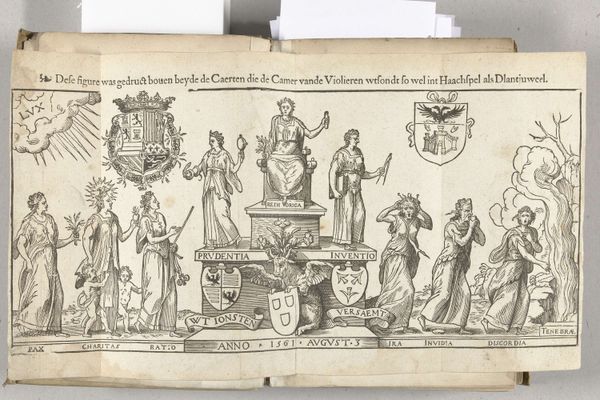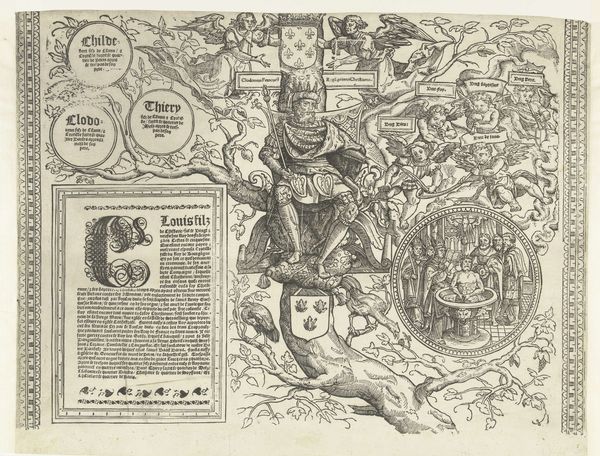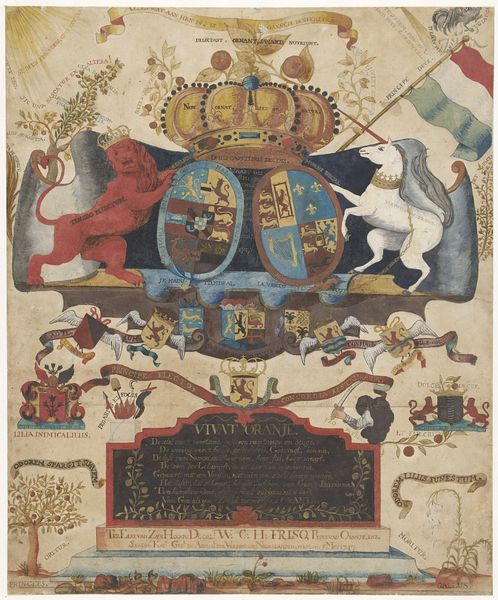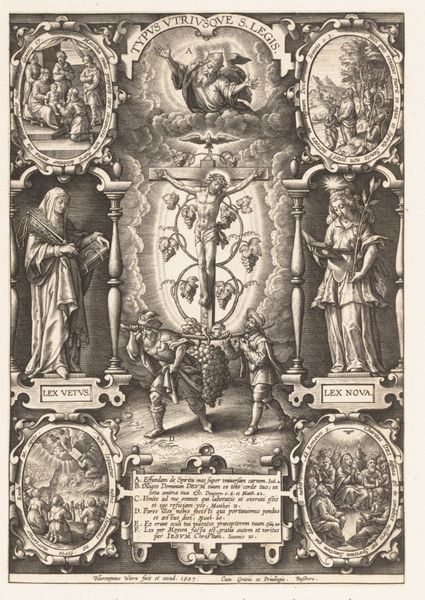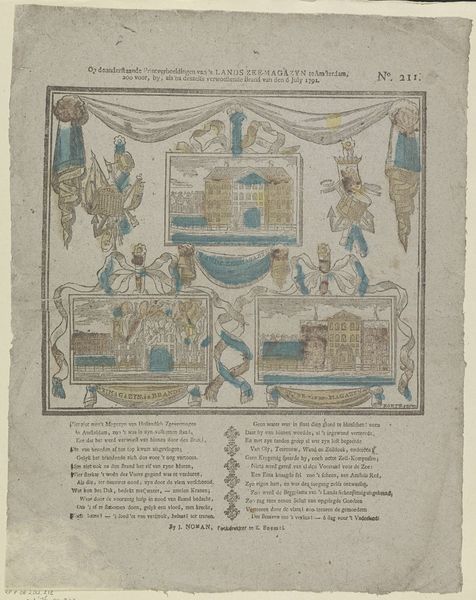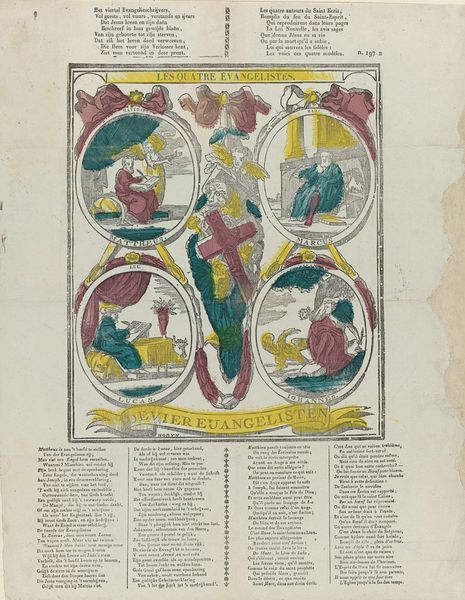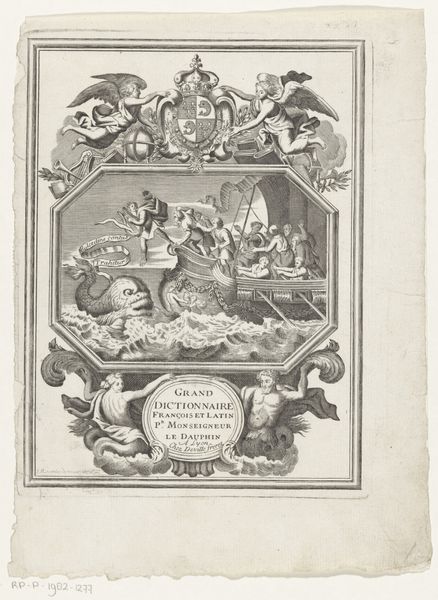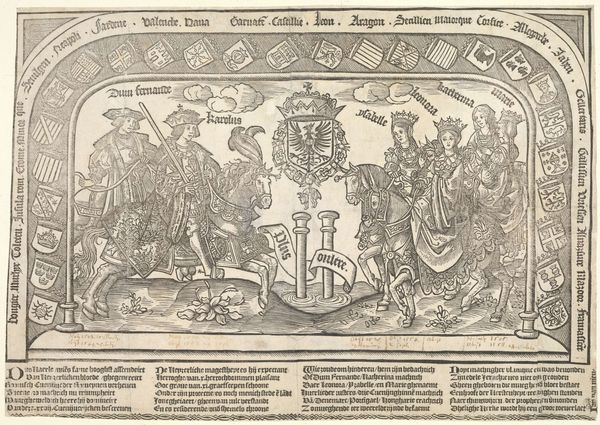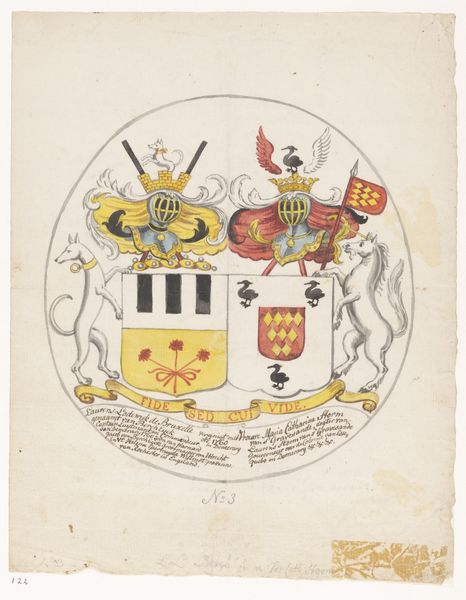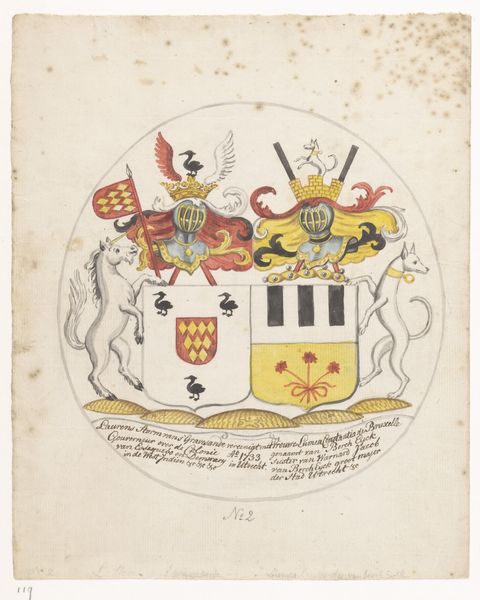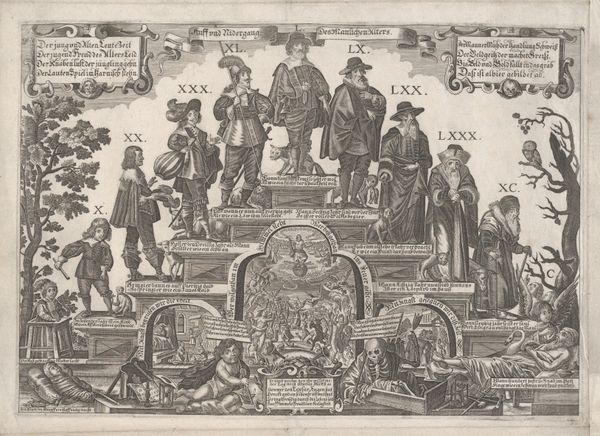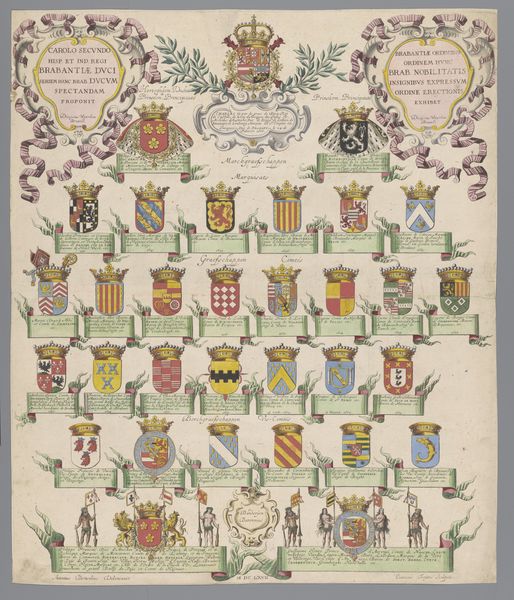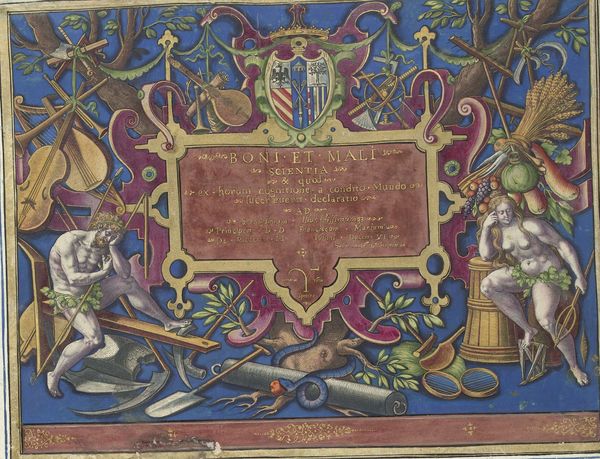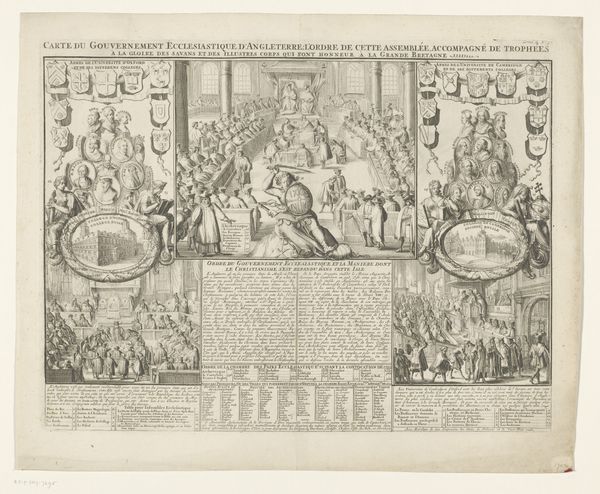
graphic-art, mixed-media, print, paper, engraving
#
graphic-art
#
mixed-media
# print
#
paper
#
cityscape
#
history-painting
#
engraving
Dimensions: height 499 mm, width 830 mm
Copyright: Rijks Museum: Open Domain
Editor: Here we have "Bovenstuk van de kaart van Rotterdam uit 1694" by Romeyn de Hooghe, housed at the Rijksmuseum. It seems to be a mixed-media print from what I can see, including engraving. I am struck by the incredible detail and the sheer number of coats-of-arms. What story does the materiality of this piece tell? Curator: Look closely at the paper itself. It's likely not the pristine, acid-free paper we’d expect today. It speaks to a different production system, one reliant on specific material sourcing and manufacturing practices. Consider the engraver's skill and the cost of this paper - this object signifies wealth and status. The paper itself, along with the engraving process, reflects social stratification. Who would have commissioned this, and for what purpose? Editor: So, you are suggesting the printmaking process wasn't just about making multiple copies, but also about something like making wealth visible? Curator: Precisely! The labor involved – the engraver's expertise, the papermaker's craft – elevates this map fragment beyond mere utility. This is not just a geographical representation; it's a carefully constructed performance of power. The choice of materials, the engraving process itself - what message were the producers aiming to convey about Rotterdam? Editor: I hadn't really considered that it’s a display of labour and resource control, instead of just a record. Curator: Exactly! The map becomes an object through which we can trace historical networks of power and production. Understanding the material conditions illuminates the complex relationship between art, labor, and capital in the 17th and 18th centuries. Consider the pigments - were they local or imported? Did their source tie Rotterdam into larger trade networks? These considerations highlight how the city was intertwined in the political and economic environment of the time. Editor: That’s a whole new perspective for me! I’ll never look at an old map the same way again. Curator: And that, I hope, is the value of a materialist approach – seeing beyond the image and into the intricate processes that brought it into being.
Comments
No comments
Be the first to comment and join the conversation on the ultimate creative platform.
